THE COMIC TRAGIC TONE OF SUSAN LORI PARKS’ IN THE BLOOD
Have you had the chance to see IN THE BLOOD by Susan Lori Parks? BLOOD is playing now at the Signature Theatre. If so, what did you think? Please click the comment button under the title. It would be great to hear what you think of the play.
After first seeing and then reading BLOOD, there is so much I admire in this production. Though the subject has been drawn from Nathanial Hawthorne’s Scarlet Letter, the tone of IN THE BLOOD is more complex than the novel’s relentlessly somber narrative.
It is well known that Hawthorne wrote the story of Hester Prynne, at least in part, to exorcise his guilt over the severity of the Puritan character in his seventeenth century ancestors in Salem. Some of whom participated in the Salem Witch Trials.
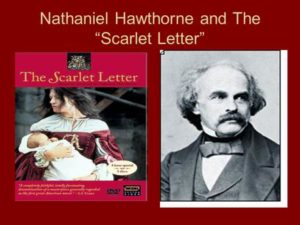
Inspiration for PARKS’ IN THE BLOOD: Nathaniel Hawthorne’s The Scarlet Letter
In reading excerpts of the novel it is discernable where Parks may have taken inspiration and reimagined the story’s components in modern terms. Before he introduces his readers to Hester Prynne, Hawthorne puts forward a representative of the law.
The door of the jail being flung open from within there appeared, in the first place, like a black shadow emerging into sunshine, the grim and gristly presence of the town-beadle, with a sword by his side, and his staff of office in his hand.
A policeman doesn’t appear in BLOOD. But one is described chasing after what turns out to be his stolen policeman’s club. Which has been stolen by her son Trouble. Hester’s oldest daughter Bully describes what has transpired.
He had a big stomach. Like he was pregnant. He was jiggling and running and yelling and red in the face.
What is ominous for its symbolic and punitive qualities in Hawthorne’s lawman translates for Parks into comic imagery. (One can picture Oliver Hardy in hot pursuit.) But there’s more than comedy at stake. Once Hester takes the billy club away from her thieving son Trouble, she becomes the holder of this moral instrument.

Hester played by Saycon Sengbloh of Parks’ IN THE BLOOD with baby picture and billy club (photo by Joan Marcus)
Moreover, Hester will brandish the club at emotional peaks in the drama. The use of the word “pregnant” in the context of a male authority figure reverberates through out the play. (The scenes with the Doctor, the Minister, and her First Boyfriend Chili.) The “big-stomached” policeman’s authoritative, yet futile anger is passed like a baton. To the angry mother of five who becomes increasingly desperate as the play goes.
What begins with slapstick imagery, reminiscent of silent films, is developed tragically as in the theater of Bertolt Brecht. Especially, as in Mother Courage and Her Children. Parks’ Hester La Negrita is not fighting for survival on the sidelines of an historic European war, but during ordinary times in modern America. The androgynous image of the pregnant-looking policeman chasing Hester’s bastard child Trouble is central to the play. The result of his losing his policeman’s stick to Hester resonants through out. It symbolizes the complicity of society, men and women, in evoking Hester’s tragedy.
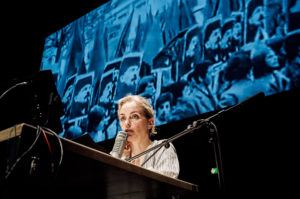
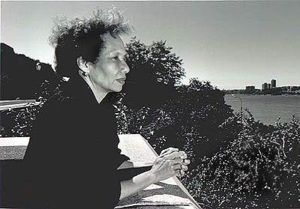
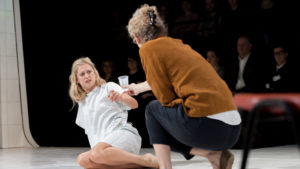


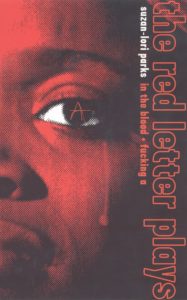
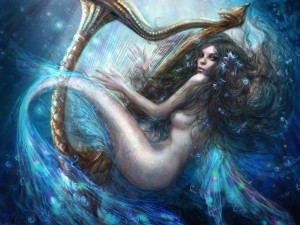

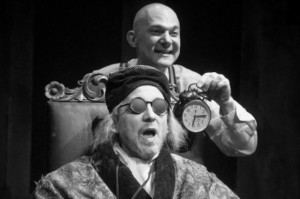
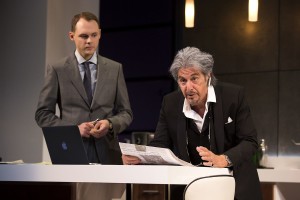
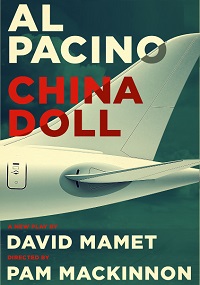
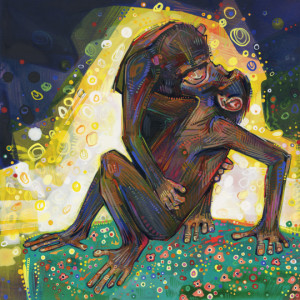

Recent Comments